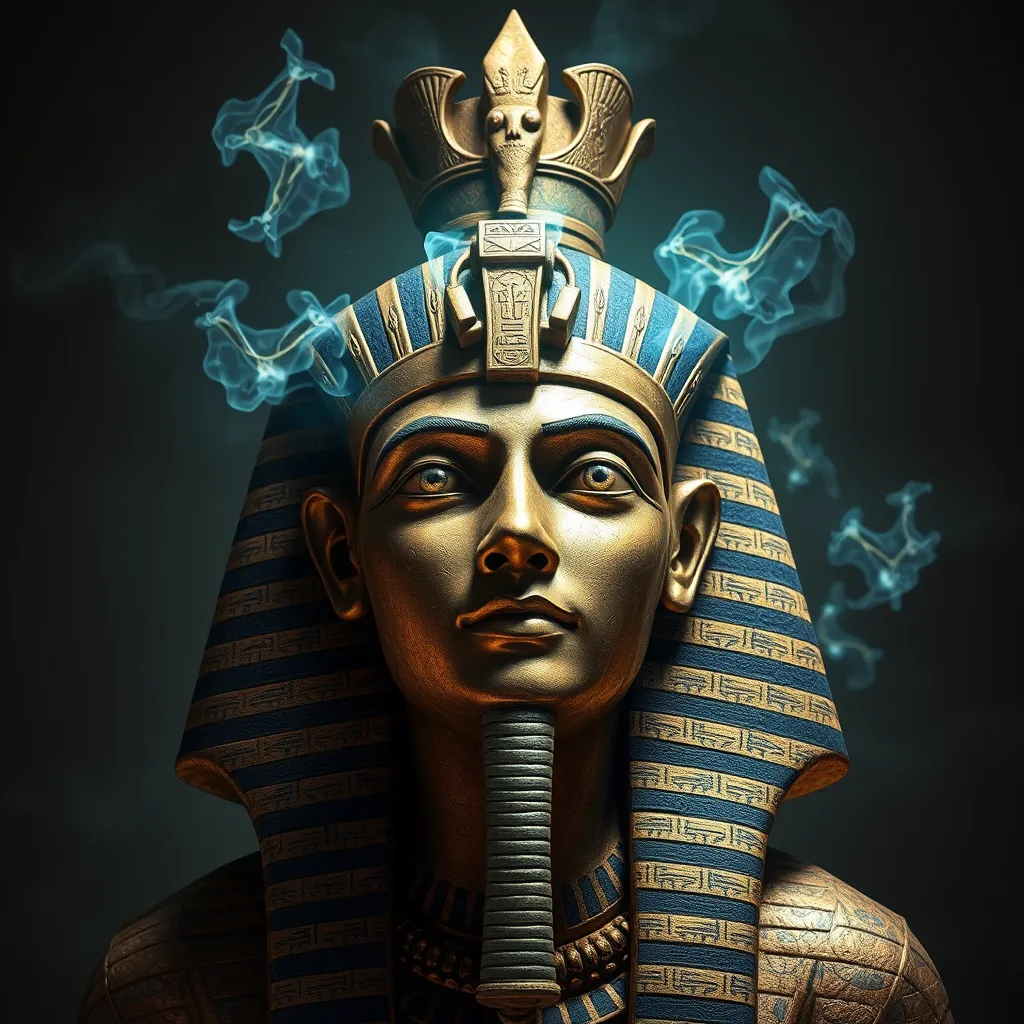Can We Really Understand the Ancient Egyptian Mind?
I. Introduction
The ancient Egyptian civilization stands as one of the most iconic and enduring cultures in human history. Spanning thousands of years, from the unification of Upper and Lower Egypt around 3100 BCE to the conquest by Alexander the Great in 332 BCE, this civilization has fascinated historians, archaeologists, and the general public alike. Understanding the mindset of the ancient Egyptians is crucial for comprehending their achievements in art, architecture, religion, and governance.
This article aims to delve into the intricacies of the ancient Egyptian mind by examining various facets of their culture, including historical context, language, religion, art, social structure, and modern interpretations. By exploring these elements, we hope to gain deeper insights into how the ancient Egyptians thought and lived.
II. Historical Context of Ancient Egypt
The timeline of ancient Egyptian history can be divided into several key periods:
- Prehistoric Egypt (before 3100 BCE)
- Early Dynastic Period (3100–2686 BCE)
- Old Kingdom (2686–2181 BCE)
- First Intermediate Period (2181–2055 BCE)
- Middle Kingdom (2055–1650 BCE)
- Second Intermediate Period (1650–1550 BCE)
- New Kingdom (1550–1070 BCE)
- Late Period (1070–332 BCE)
Key cultural and societal structures included a theocratic monarchy, where the pharaoh was considered both a divine ruler and a political leader. The society was highly stratified, with a clear hierarchy that influenced every aspect of life.
The geography of ancient Egypt, particularly the Nile River, played a significant role in shaping the mindset of its people. The annual flooding of the Nile provided fertile land for agriculture, fostering a reliance on the river that influenced their cosmology and worldview.
III. Language and Writing: The Key to the Mind
The development of hieroglyphics was a monumental achievement in ancient Egyptian civilization. This intricate system of writing, composed of logographic and alphabetic elements, served not only as a means of communication but also as a reflection of their complex thought processes.
Literature and religious texts, such as the “Book of the Dead” and various creation myths, played a crucial role in shaping the ancient Egyptian psyche. These texts conveyed moral lessons, cosmological beliefs, and societal values, which were integral to their identity.
However, limitations in translation and interpretation remain significant challenges. Many nuances of language can be lost, leading to potential misrepresentations of their thoughts and beliefs. Scholars must tread carefully to avoid oversimplifying or misinterpreting ancient texts.
IV. Religion and Spirituality
The ancient Egyptians practiced a rich polytheistic religion that permeated every aspect of their lives. They worshipped a pantheon of gods and goddesses, each representing various aspects of nature and society. This belief system profoundly impacted their daily activities, rituals, and interactions.
Concepts of the afterlife were central to their religion, with the belief in immortality driving elaborate burial practices and monumental architecture, such as the pyramids. The idea of Ma’at, representing truth, balance, and order, governed their moral compass and decision-making.
Religion shaped their worldview, instilling a sense of duty to maintain harmony in both personal and communal aspects of life. The intertwining of religion with governance also meant that the pharaoh’s actions were seen as divinely sanctioned, further reinforcing the power structures within society.
V. Art and Symbolism as Expressions of Thought
Art in ancient Egypt was not merely decorative; it was a vital means of communication and expression of their beliefs and values. From wall paintings in tombs to monumental sculptures, each piece of art conveyed specific meanings and narratives.
Symbolism played a critical role in their artistic expressions. Common symbols included:
- The ankh, representing life
- The scarab beetle, symbolizing resurrection and transformation
- The Eye of Horus, associated with protection and royal power
The relationship between art, culture, and cognition is evident in how ancient Egyptians used imagery to convey complex ideas. Their art served as a visual language that communicated their beliefs and values across generations.
VI. Psychology and Social Structure
The social hierarchy in ancient Egypt influenced individual thought processes and identity formation. The stratified society consisted of various classes, including the pharaoh, nobles, priests, craftsmen, and laborers. Each class had its roles, responsibilities, and expectations, shaping the way individuals perceived themselves and their place in the world.
Concepts of identity and community were deeply rooted in their culture. Family and kinship played significant roles in social dynamics, and individuals often identified themselves through their familial ties and social roles.
Gender and class also influenced mental frameworks. While men typically held positions of power, women in ancient Egypt enjoyed certain rights and could manage property and businesses. However, the societal expectations and roles of each gender shaped their thoughts and behaviors.
VII. Modern Interpretations and Misinterpretations
Contemporary scholars approach ancient Egyptian thought through various lenses, utilizing archaeology, anthropology, and textual analysis. However, common misconceptions and cultural biases can cloud interpretations, leading to oversimplified or inaccurate representations of their beliefs and practices.
Popular media often perpetuates these misconceptions, portraying ancient Egyptians in ways that can distort their true nature. Films and novels may emphasize mythological elements while neglecting the complexities of their society.
It is essential for modern scholars and enthusiasts to engage critically with sources and recognize the limitations of our understanding, fostering a more nuanced appreciation of ancient Egyptian thought.
VIII. Conclusion
In summary, exploring the ancient Egyptian mind reveals a complex interplay of language, religion, art, and social structure that shaped their worldview and behaviors. This journey into their psyche uncovers insights into how they understood life, death, community, and the cosmos.
The quest to understand ancient cultures like that of Egypt continues, as new discoveries and interpretations emerge. Future research will likely reveal even more about this fascinating civilization, offering deeper insights into the minds of those who lived thousands of years ago.
As we strive to grasp the intricacies of ancient Egyptian thought, we not only enrich our understanding of their civilization but also reflect on the universal aspects of the human experience that transcend time.




